8
were the tentacles of the Octo-pus:
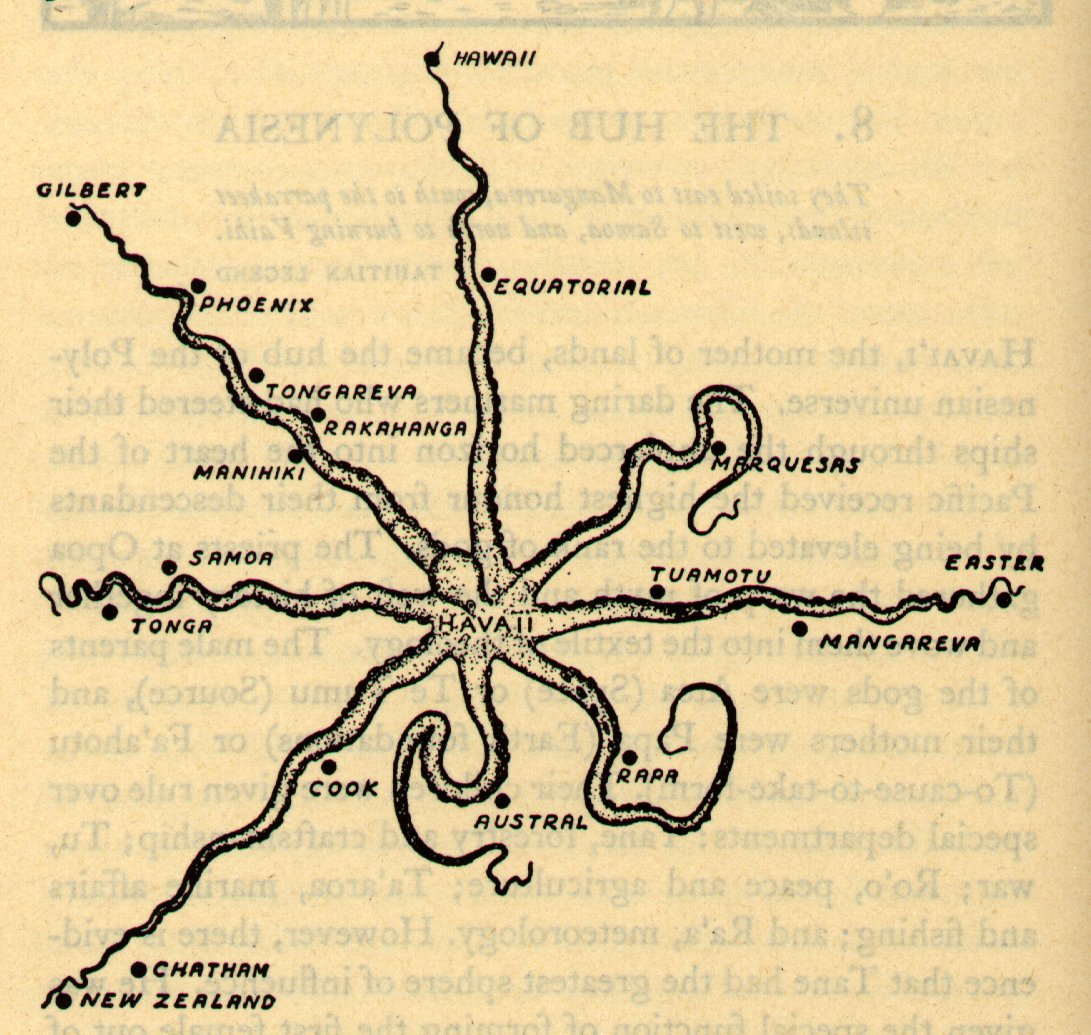
And 8 were also the number
of legs on Sleipner, the Horse of the one-eyed god Odin:

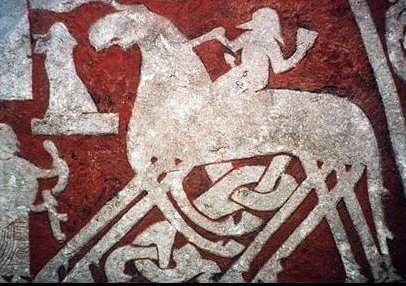
...
Lughnasadh
or Lughnasa ... Irish:
Lúnasa;
Scottish Gaelic: Lùnastal;
Manx: Luanistyn) is a Gaelic festival marking the beginning of the
harvest season that was historically observed throughout Ireland, Scotland and
the Isle of Man. Originally it was held on 31 July - 1 August, or approximately
halfway between the summer solstice and autumn equinox. However, over time the
celebrations shifted to the Sundays nearest this date.
Lughnasadh is one of the four Gaelic seasonal festivals; along with Samhain,
Imbolc and Beltane. It corresponds to other European harvest festivals, such as
the Welsh Calan Awst and the English Lammas
... In
Irish mythology, the Lughnasadh festival is said to have been begun by
the god Lugh (modern spelling: Lú) as a funeral feast and athletic
competition ... in commemoration of his mother (or foster-mother) Tailtiu.
She was said to have died of exhaustion after clearing the plains of Ireland for
agriculture ...
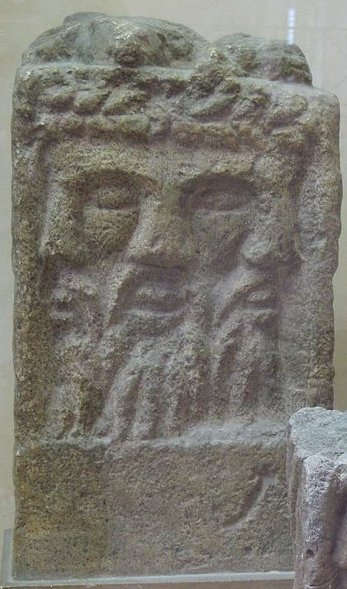
(An altar depicting a three-faced
god identified as Lugh/Lugus.)
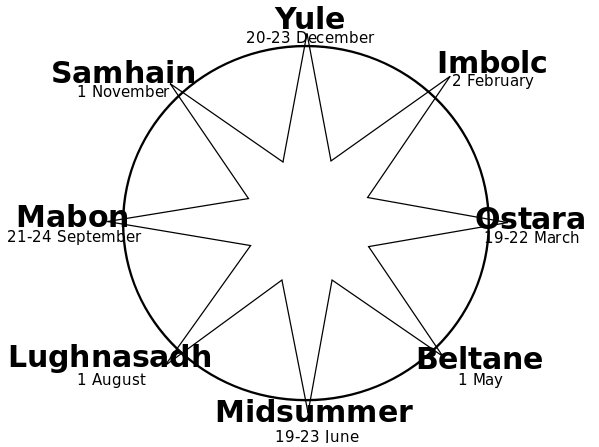
... Beltane is mentioned in some of the
earliest Irish literature and it is associated with important
events in Irish mythology. It marked the beginning of summer and
was when cattle were driven out to the summer pastures. Rituals
were performed to protect the cattle, crops and people, and to
encourage growth. Special bonfires were kindled, and their
flames, smoke and ashes were deemed to have protective powers.
The people and their cattle would walk around the bonfire, or
between two bonfires, and sometimes leap over flames or embers.
All household fires would be doused and then re-lit from the
Beltane bonfire [bone fire].
Doors, windows, byres and the cattle themselves
would be decorated with yellow May flowers, perhaps because they
evoked fire. In parts of Ireland, people would make a May Bush;
a thorn bush decorated with flowers, ribbons and bright shells.
Holy wells were also visited, while Beltane dew was thought to
bring beauty and maintain youthfulness ...
Since the early 20th century it has been commonly
accepted that Old Irish Beltaine is derived from a Common
Celtic *belo-te(p)niâ, meaning
bright fire.
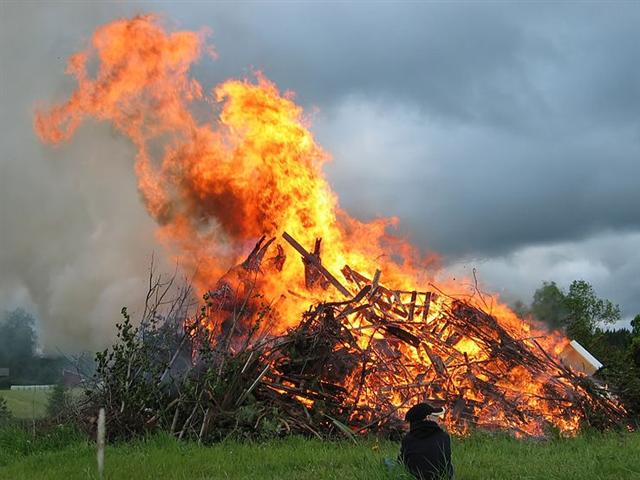
The element *belo- might be cognate
with the English word bale (as in bale-fire) meaning
'white' or 'shining'; compare Old English bael, and
Lithuanian/Latvian baltas/balts, found in the name of the
Baltic; in Slavic languages byelo or beloye also
means 'white', as in Беларусь (White Russia or Belarus)
or Бе́лое мо́ре (White Sea). A more recent etymology by
Xavier Delamarre would derive it from a Common Celtic
*Beltinijā, cognate with the name of the Lithuanian goddess
of death Giltinė, the root of both being
Proto-Indo-European *gelH- ('suffering, death') ...
 |
 |
 |
 |
| Ca5-17 |
Ca5-18 |
Ca5-19 |
Ca5-20 (125) |
| hakahagana te honu |
tagata moe hakarava hia |
ka moe |
hakapekaga mai |
| Heap of Fuel = μ Cancri (122.1), Regor (Roger reversed) = γ Velorum (122.7), |
Tegmine (Covered Up) = ζ Cancri
(123.3) |
Al Tarf (The End)
= β Cancri (124.3) |
Bright Fire
= λ Cancri (125.4) |

| Peka Pekapeka, starfish. Vanaga.
1. 100,000 T. 2. A cross; pekapeka, curly; pekapekavae, instep T. (? shoelaces.); hakapeka, to cross; hakapekapeka, to interlace, lattice. T Mgv.: peka, a cross, athwart, across; pepeka, thick, only said of a number of shoots or sprouts in a close bunch. Mq.: peka, a cross, dense thicket. Ta.: pea, a cross. Churchill.
Mq.: Pekahi, to make signs with the hand, to blow the fire with a fan. Ha.: peahi, id. Churchill. |
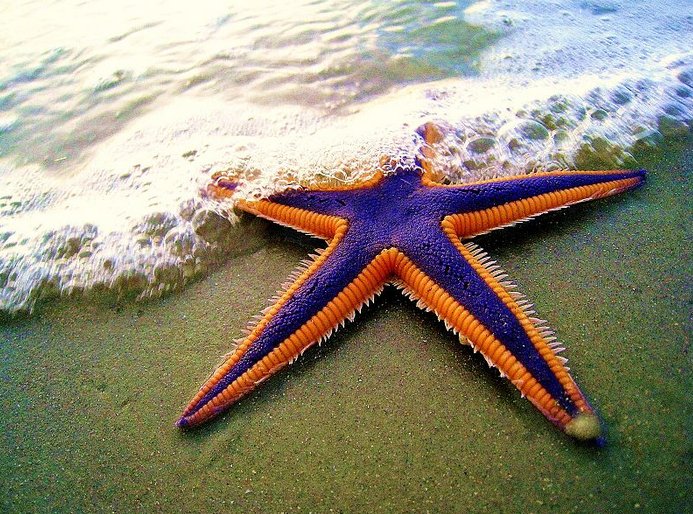
|
*MAY
10 |
11 |
12 |
13
(*53) |
14 |
15
(135) |
 |
 |
 |
 |
 |
 |
|
Ga2-24 |
Ga2-25 |
Ga2-26 |
Ga2-27 |
Ga2-28 |
Ga2-29 (59) |
|
φ
Gemini
(118.4) |
DRUS
= χ Carinae (119.9) |
ω
Cancri (120.2) |
8h
(121.7)
χ
Gemini
(121.0),
NAOS
= ζ Puppis
(121.3) |
ρ Puppis (122.0),
HEAP
OF FUEL
= μ Cancri (122.1), ζ Monocerotis (122.3), ψ
Cancri (122.6),
REGOR (Roger reversed)
= γ Velorum (122.7) |
TEGMINE (Covered Up) = ζ Cancri
(123.3) |
|
July
17 |
18 |
19
(200) |
20
(*121) |
21 |
22 /
7 |
|
"June 6 (157) |
7 |
8 |
9
(*80) |
Maro 10 |
11 |
|
ι Sagittarii
(301.2), TEREBELLUM
= ω Sagittarii, ξ Aquilae (301.3),
ALSHAIN (Falcon)
= β Aquilae (301.6), φ Aquilae (301.8) |
ε Pavonis, θ
Sagittarii (302.3), γ Sagittae (302.5), μ
Pavonis (302.7) |
τ Aquilae (303.8) |
20h (304.4)
η Sagittae
(304.2), δ Pavonis (304.4) |
SHANG WEI (Higher
Guard) = κ Cephei (305.2), θ Sagittae
(305.4),
TSEEN FOO (Heavenly Raft) =
θ Aquilae (Ant.) (305.6), ξ Capricorni (305.8) |
TSO KE (Left Flag)
= ρ Aquilae (306.3) |
|
January 16 |
17 |
18 (383) |
19 |
20 |
21 |
|
*NOVEMBER 9 |
10
(314) |
11 |
12
(*236) |
13 |
14 |
|
*MAY
16 (136) |
17 |
18 |
19 |
20
(*60) |
 |
 |
 |
 |
 |
|
Ga3-1 |
Ga3-2 |
Ga3-3 |
Ga3-4 (63) |
Ga3-5 |
|
AL
TARF (The End)
= β Cancri (124.3)
RAS
ALGETHI (α Herculis)
|
χ Cancri (125.2),
BRIGHT FIRE
= λ Cancri (125.4) |
AVIOR
= ε Carinae (126.4), φ Cancri (126.8) |
ο Ursa Majoris (127.4) |
Pushya-8
υ Cancri (128.1),
θ
CANCRI
(128.2) |
|
July
23 (204) |
24 (*125) |
25 |
26 |
27 (208) |
|
°July 19 (200) |
20 (*121) |
21 |
22 / 7 |
23 (204) |
|
'June 26 (177) |
27 |
28 |
29 (*100) |
SIRIUS |
|
"June 12 (163) |
13 (*84) |
14 (165) |
Maro 15 |
16 |
|
GREDI
(Goat) = α Capricorni
(307.2), σ Capricorni (307.5),
ALSHAT (The Sheep - to
be slaughtered) = ν Capricorni
(307.9) |
Al Sa’d al Dhabih-20 (The Lucky One of the
Slaughterers) /
Ox /
Herd Boy-9 (Buffalo)
DABIH = β
Capricorni (308.0), κ Sagittarii (308.1),
SADIR
(Breast) = γ
Cygni (308.4),
PEACOCK = α Pavonis
(308.7) |
KHUFU
MINTAKA (δ Orionis)
|
KHAFRE
ALNILAM (ε Orionis)
|
MENKAURE
ALNILAK (ζ Orionis)
|
|
OKUL = π
Capricorni (309.6), BOS
= ρ Capricorni (309.9)
ARNEB
(α Leporis)
|
ο Capricorni
(310.2), θ Cephei (310.5)
HEKA (λ Orionis)
|
ROTTEN MELON
= ε Delphini, φ Pavonis (311.2), η
Delphini (311.4), ζ Delphini, ρ Pavonis (311.7)
PHAKT
(α Columbae)
|
|
January 22 (387) |
23 |
24 (*309) |
25 (390) |
26 |
|
°January 18 (384) |
19 |
20
(385) |
21 (*306) |
22 |
|
'December 26 (360) |
27 |
28 |
29
(363) |
30
(*284) |
|
"December 12 |
13 |
14 (348) |
15 |
16
(*270) |
|
*NOVEMBER 15 |
16
(320) |
17 |
18 (*242) |
19 |
If the Bright Fire (Beltane) festival
had traditionally been determined from the heliacal
rising of the star Bright Fire (λ Cancri) in
*MAY 17 (137) at the time when Aldebaran was at 0h, then this
time mark could alternatively (and better) have been
used when λ Cancri
returned to visibility 16 days later, viz. in *JUNE 2
(153).
But probably this was too late in summer.
Instead we could go back a further 16 right ascension
precessional days from Aldebaran at 0h (*68) and find Menkaure
at Ga1-20 (*84 = *68 + *16):
|
*APRIL 3 |
4 |
5 |
6
(*16 = *84 - *68) |
7 |
 |
 |
 |
 |
 |
|
Ga1-17 |
Ga1-18 |
Ga1-19 |
Ga1-20 |
Ga1-21 |
|
ψ
Orionis (81.1),
NIHAL (Thirst-slaking Camels)
= β
Leporis (81.7) |
TAU-TORU |
ο
Aurigae (85.8), γ Leporis (85.9)
YANG
MUN (α Lupi)
|
|
KHUFU |
KHAFRE |
MENKAURE |
|
MINTAKA (Belt)
= δ
Orionis, υ Orionis (82.4), χ Aurigae (82.5), ε
Columbae (82.6) |
Al
Hak'ah-3 /
Mrigashīrsha-5 /
Turtle-20 (Monkey) /
Mas-tab-ba-tur-tur (Little Twins)
ARNEB (Hare) = α Leporis,
Crab Nebula = M1 Tauri (83.0, φ¹ Orionis (83.1),
HEKA (White Spot)
= λ
Orionis, Orion Nebula = M42 (83.2), φ² Orionis
(83.6),
ALNILAM (String of Pearls)
= ε
Orionis (83.7) |
Three Stars-21
(Gibbon) /
Shur-narkabti-sha-shūtū-6 (Star in the Bull
towards the south) /
ANA-IVA-9
(Pillar of exit)
HEAVENLY GATE
= ζ Tauri, ν Columbae (84.0), ω Orionis (84.2),
ALNITAK (Girdle)
= ζ
Orionis,
PHAKT (Phaet) = α Columbae
(84.7) |
|
June
10 |
11 |
12 |
13
(*84) |
14
(165) |
|
LESATH (Sting) = ν
Scorpii, δ Arae (264.7),
CHOO = α Arae (264.9) |
Al Shaula-17
ALWAID
(Mother Camels) = β Draconis,
MAASYM (Wrist) = λ
Herculis (265.1), SHAULA
(Sting) = λ Scorpii (265.3), KUMA = ν
Draconis (265.6), σ Arae (265.9)
HAMAL
(α Arietis)
|
RAS ALHAGUE
= α Ophiuchi (266.1),
SARGAS = θ Scorpii
(266.3), μ Ophiuchi, π Arae (266.5),
NAN HAE (Southern Sea)
= ξ Serpentis (266.6), ι Herculis
(266.7) |
λ Arae (267.1),
GIRTAB (Seizer) = κ
Scorpii, ο Serpentis (267.6),
AL DHĪLI (The Wolf)
= ω Draconis (266.7),
DSIBAN (Wolf Pair) = ψ Draconis (267.9) |
KELB
ALRAI (Dog of the Shepherd)
= β Ophiuchi, μ Arae
(268.1), KEW HO (Nine
Rivers) = μ Herculis (268.6), η Pavonis
(268.7), APOLLYON =
ι Scorpii (268.9) |
|
December 10 |
11 |
12 |
13 |
14
(348 = 165 + 183) |
|
*OCTOBER 3 |
4 |
5 |
6 |
7
(280 = 348 - 68) |
The figure in Ga1-18 is one-eyed like
Odin (corresponding to the planet Mercury and to
Wednesday). In Hb9-36 one of the koti 'eyes' are
failing:
|
Wednesday (the day of Mercury ≈ Odin) |
 |
 |
 |
 |
 |
 |
 |
|
Hb9-33 |
Hb9-34 |
Hb9-35 |
Hb9-36 |
koti |
Hb9-37 |
Hb9-38 |
| Koti
Kotikoti. To cut with
scissors (since this is an old word and scissors
do not seem to have existed, it must mean
something of the kind). Vanaga.
Kotikoti. To tear;
kokoti, to cut, to chop, to hew, to cleave,
to assassinate, to amputate, to scar, to notch,
to carve, to use a knife, to cut off, to lop, to
gash, to mow, to saw; kokotiga kore,
indivisible; kokotihaga, cutting, gash
furrow. P Pau.: koti, to chop. Mgv.:
kotikoti, to cut, to cut into bands or
slices; kokoti, to cut, to saw;
akakotikoti, a ray, a streak, a stripe, to
make bars. Mq.: koti, oti, to cut,
to divide. Ta.: oóti, to cut, to carve;
otióti, to cut fine. Churchill.
Pau.: Koti, to gush, to
spout. Ta.: oti, to rebound, to fall
back. Kotika, cape, headland. Ta.:
otiá, boundary, limit. Churchill. |
*84 * 71 = 5964 = 1842 + 4122 B.C.
But not even the Mayas went so far back in time,
only to the beginning of the present creation, about
1000 years later than 4122 B.C.:
... On the Tablet
of the Cross, the Palenque account begins with the birth of
First Mother six [6] years before the Creation on 12.19.13.4.0 8
Ahaw 18 Tz'ek (December 7, 3121 B.C.) and five hundred and
forty [540 = 6 * 90] days earlier, the birth of First Father, Hun-Nal-Ye,
on 12.19.11.13.0 1 Ahaw 8 Muwan (June 16, 3122 B.C.). [6
+ 540 = 6 * 91 = 2 * 273 = 1½ * 364.]
His
birth is connected to the Creation day, 4 Ahaw 8 Kumk'u
(August 13, 3114 B.C.), when, according to the inscriptions,
thirteen cycles ended. The text mentions an action that First
Father accomplished on Creation day, but we haven't been able to
decipher what it was. However, in the next clause, the Palenque
scribes repeated Creation again and described it as
'it was made
visible, the image at Lying-down-Sky, the
First-Three-Stone-Place' ...
(1842 + 3122 B.C.) / 71 = *70 and this
becomes *86 after adding 16 nights before 'it was made
visible':
|
*APRIL 8 |
9 |
10 |
11 (101) |
12 |
 |
 |
 |
 |
 |
|
Ga1-22 |
Ga1-23 |
Ga1-24 |
Ga1-25 |
Ga1-26 |
|
μ
Columbae,
SAIPH
(Sword)
= κ
Orionis (86.5), τ Aurigae, ζ Leporis (86.6) |
υ
Aurigae (87.1), ν Aurigae (87.2),
WEZN
(Weight)
= β
Columbae, δ Leporis (87.7),
TZE
(Son)
= λ Columbae (87.9) |
Ardra-6 /
ANA-VARU-8
(Pillar to sit by)
χ¹
Orionis, ξ Aurigae (88.1),
BETELGEUZE = α Orionis
(88.3), ξ Columbae (88.5), σ Columbae (88.7)
ZUBEN
ELGENUBI (α Librae)
|
η
Leporis (89.0),
PRAJA-PĀTI (Lord of Created Beings)
= δ
Aurigae,
MENKALINAN (Shoulder)
= β
Aurigae,
MAHASHIM (Wrist)
= θ Aurigae, and γ Columbae (89.3), π Aurigae
(89.4), η Columbae (89.7) |
μ
Orionis (90.3), χ² Orionis (90.5) |
|
June
15 |
16 |
17
(168) |
18 |
19 |
|
MULIPHEN (Oaths) =
γ Ophiuchi (269.0),
BASANISMUS = G Scorpii (269.5),
PHERKARD (Dipper) =
δ Ursae Minoris (269.9) |
PTOLEMY CLUSTER =
M7 Scorpii (270.5),
GRUMIUM (Lower Jaw) = ξ Draconis (270.9) |
RUKBALGETHI GENUBI
(Bending Claw) = θ Herculis (271.1), ξ
Herculis (271.5), ETAMIN
(Head) = γ Draconis, ν Herculis (271.7),
ν Ophiuchi (271.8) |
CAT'S EYE = NGC6543
Draconis (272.2), ζ Serpentis (272.4), τ
Ophiuchi (272.9) |
Winnowing Basket-7 (Leopard)
18h (273.4)
NASH (Point)
= γ Sagittarii (273.7), θ Arae (273.8) |
|
December 15 |
16
(350) |
17 |
18 |
19
(*273) |
|
*OCTOBER 8 |
9 |
10 |
11 |
12
(285) |
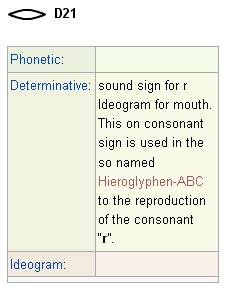
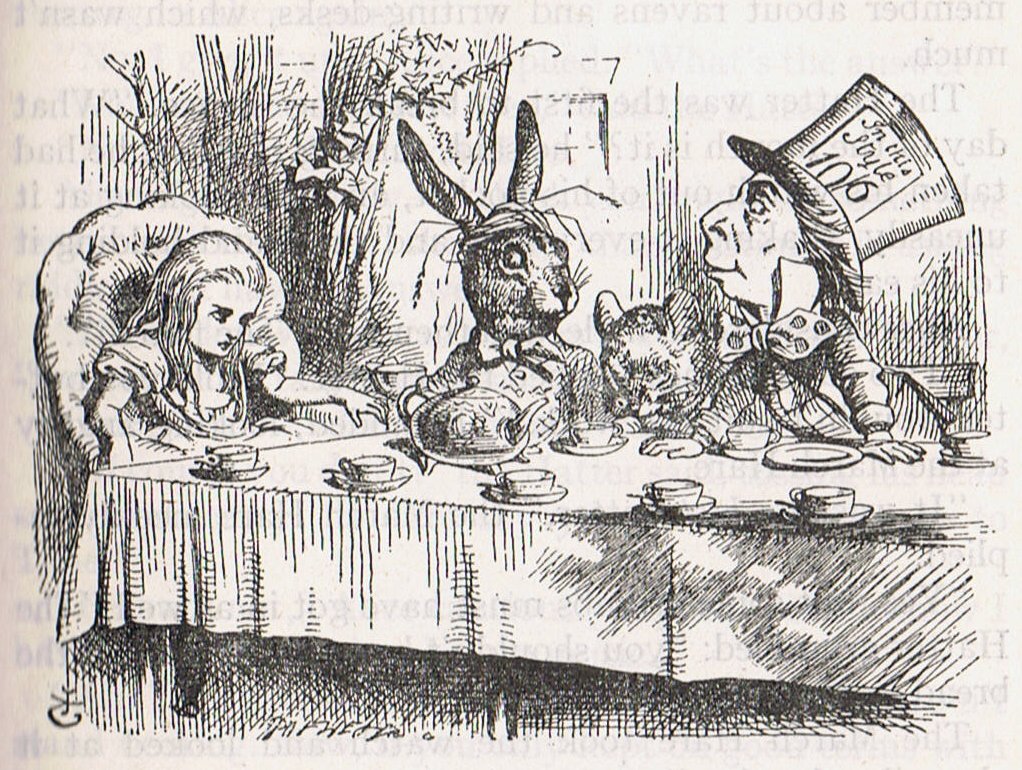
The Mad Hatter (corresponding to the
whimsical planet of Odin) has a price label alluding to June 10
in his hat and here began the month when Father Light (Jupiter)
was to be sacrificed - and presumably with his vacant throne
waiting to be taken over by his shadow opposite (tanist)
who exhibited female characteristics.
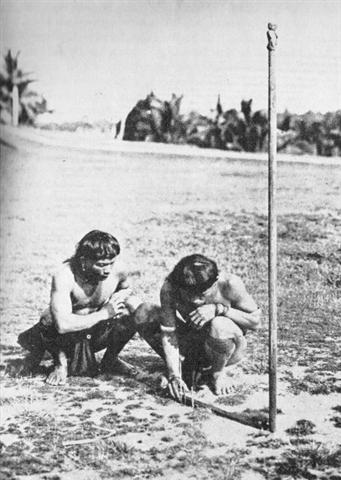
...
Mercury was used in the process of curing pelts for hats, making it impossible for hatters to avoid
inhaling the mercury fumes given off during the hat
making process; hatters and mill workers thus often
suffered mercury poisoning, causing neurological damage,
including confused speech and distorted vision ...

The first day in the lunar calendar was
(O)Hiro, which also was the name of Mercury. When
Father Light (Sun) was gone, then the Full Moon would
take a step forward and steal his position.
| Hiro
1. A deity invoked when praying
for rain (meaning uncertain). 2. To twine tree
fibres (hauhau, mahute) into strings or
ropes.
Ohirohiro, waterspout
(more exactly pú ohirohiro), a column of
water which rises spinning on itself.
Vanaga.
To spin, to twist. P Mgv.:
hiro, iro, to make a cord or line in
the native manner by twisting on the thigh. Mq.:
fió, hió, to spin, to twist, to
twine. Ta.: hiro, to twist. This differs
essentially from the in-and-out movement
involved in hiri 2, for here the movement
is that of rolling on the axis of length, the
result is that of spinning. Starting with the
coir fiber, the first operation is to roll (hiro)
by the palm of the hand upon the thigh, which
lies coveniently exposed in the crosslegged
sedentary posture, two or three threads into a
cord; next to plait (hiri) three or other
odd number of such cords into sennit.
Hirohiro, to mix, to blend, to dissolve, to
infuse, to inject, to season, to streak with
several colors; hirohiro ei paatai, to
salt. Hirohiroa, to mingle; hirohiroa
ei vai, diluted with water. Churchill.
Ta.: Hiro, to
exaggerate. Ha.: hilohilo, to lengthen a
speech by mentioning little circumstances, to
make nice oratorial language. Churchill.
Whiro
'Steals-off-and-hides'; also [in addition to the
name of Mercury] the universal name for the
'dark of the Moon' or the first day of the lunar
month; also the deity of sneak thieves and
rascals.
Makemson. |
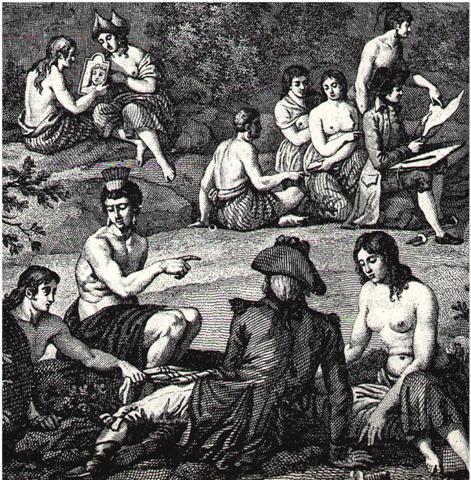
...
Lobster
said to Flounder: 'Let us-two hide from each other,
see who is best at that.' Flounder agreed to play
this game. Lobster went to a hole in the coral, hid
his body; but his feelers stuck out, he could not
hide them. Flounder knew where he was, found him.

Said
Flounder; 'Now it is my turn.' He stirred up a cloud
of mud and scooted into it. Then he returned to
Lobster's side, so quietly that Lobster did not know
he was there. 'Here I am sir, Lobster!'
Lobster was so angry at being beaten that he stamped
on the fish and smashed him flat. Cried Flounder;
'Now I've got one eye in the mud!' Therefore Lobster
gouged it out for him and roughly stuck it back on
top. This is the reason why men tread on the
Flounder, but can always see the Lobster's feelers
outside his hole.
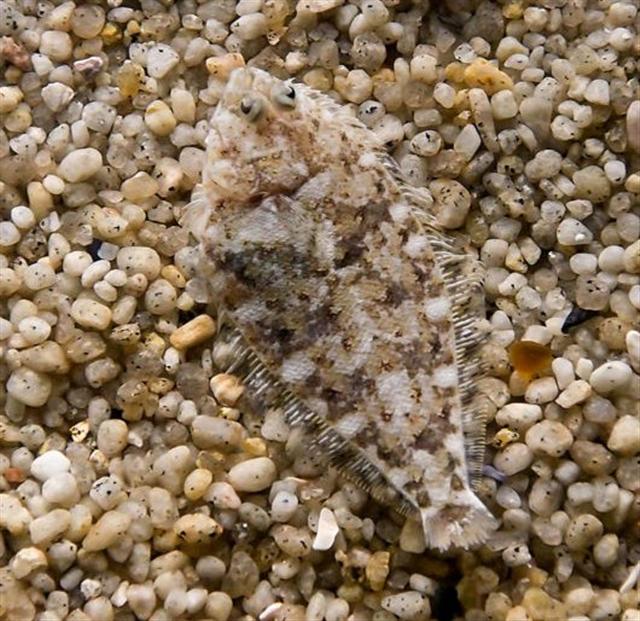
Flounders, like shadows, are not
standing up but lying flat against the ground. The
only metal which is in a liquid state is mercury,
which therefore is searching low ground.
...
The eye
is the symbolic site of subjection. Valeri observes
that: 'The two sentiments that permit the
transcendence of the self are, according to
Hawaiians, desire and respect. One and the other are
called kau ka maka, literally, 'to set one's
eyes on' ...
'To
see' (ike) in Hawaiian (as in French or
English) is 'to understand', but it is also 'to know
sexually'.
Witness
to the order, the world of forms generated by the
chief, the eye, is the sacrifice of those who
violate that order. The left eye of the slain
tabu-transgressors is swallowed by Kahoali'i,
ceremonial double of the king and living god of his
sacrificial rites. Like the sun, chiefs of the
highest tabus - those who are called 'gods', 'fire',
'heat', and 'raging blazes' - cannot be gazed
directly upon without injury. The lowly commoner
prostrates before them face to the ground, the
position assumed by victims on the platforms of
human sacrifice. Such a one is called makawela,
'burnt eyes' ...
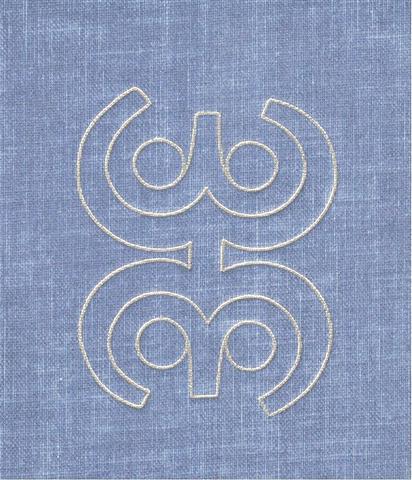
|





























